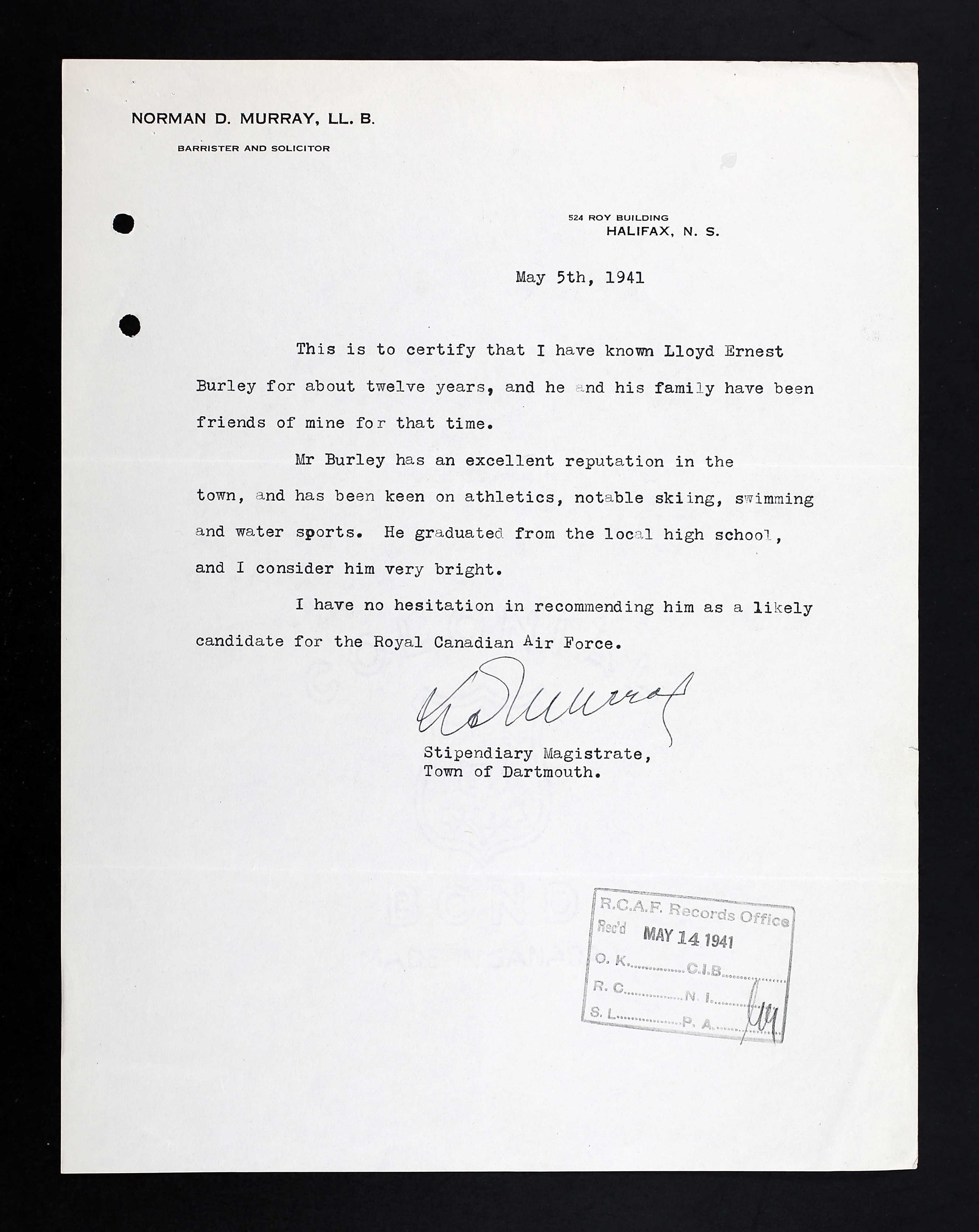
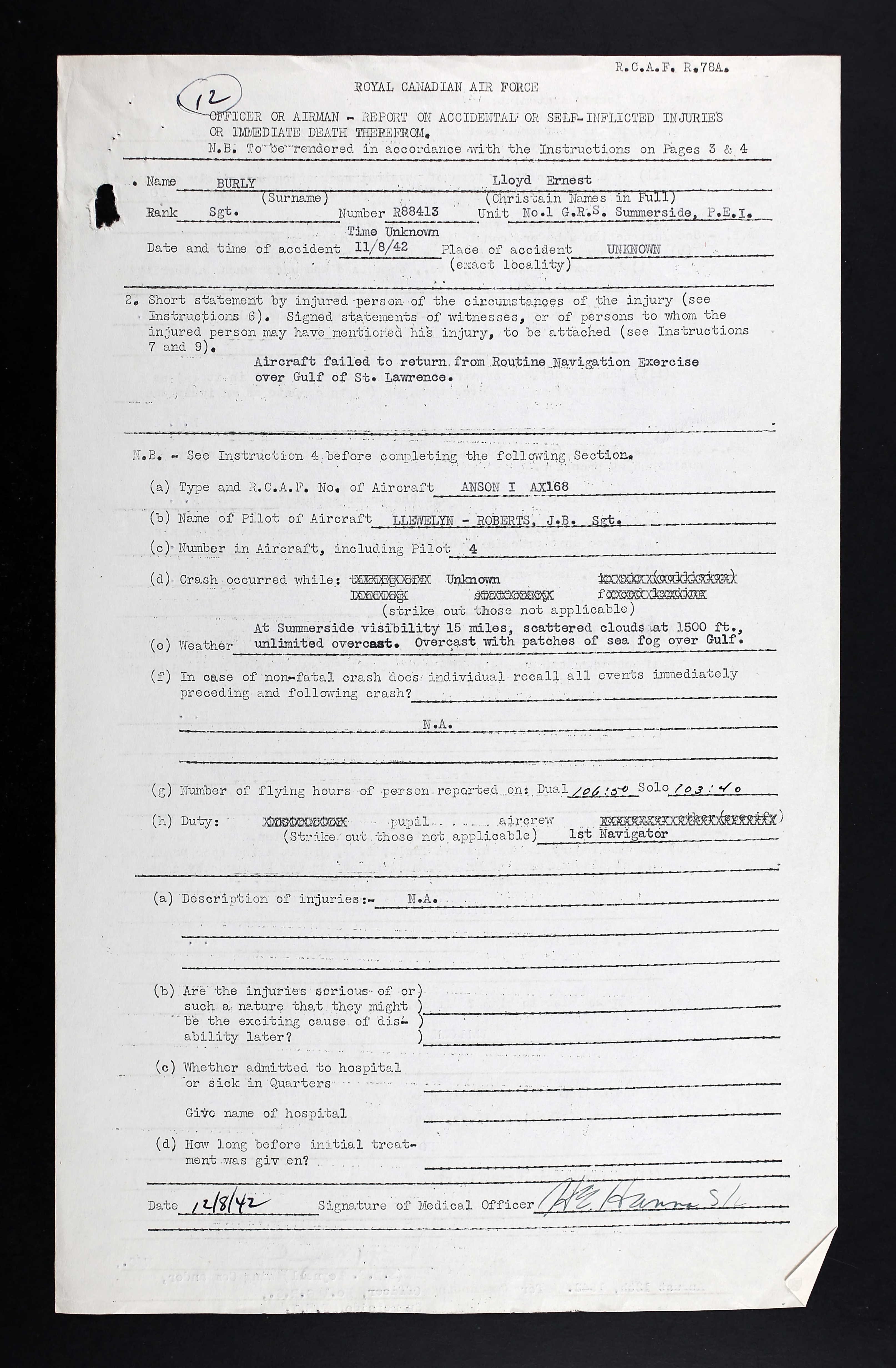
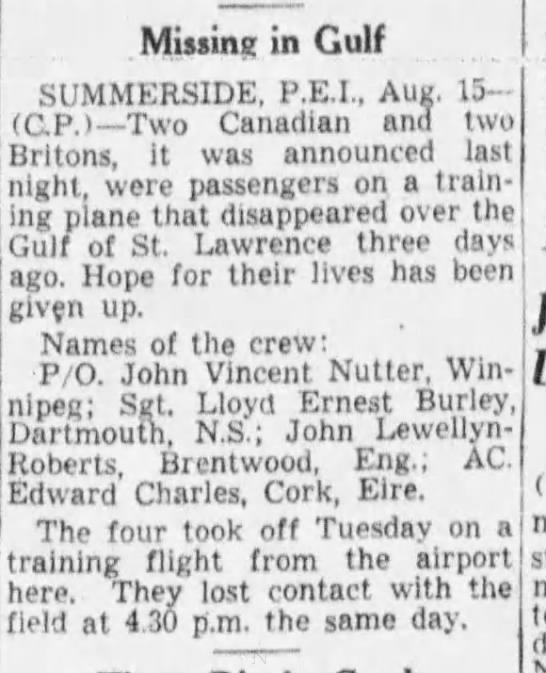
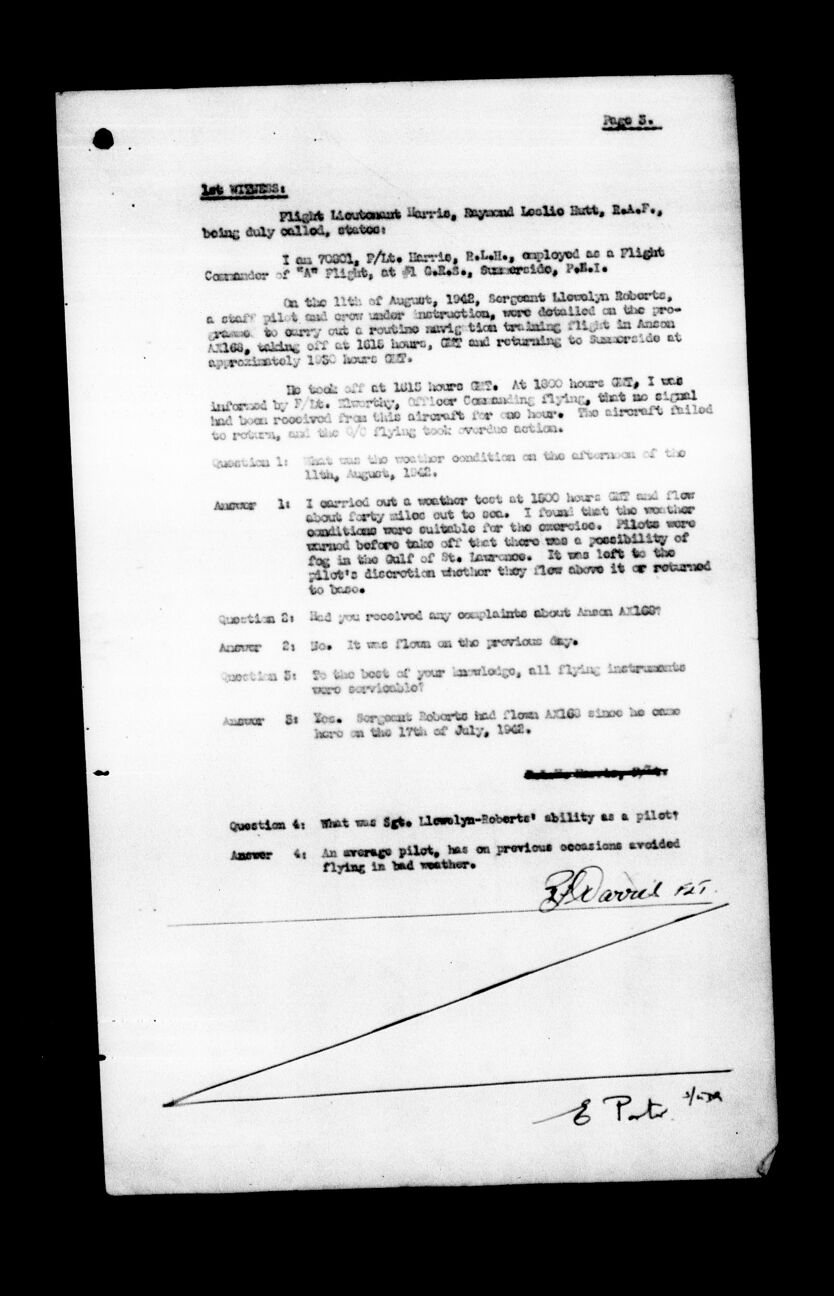
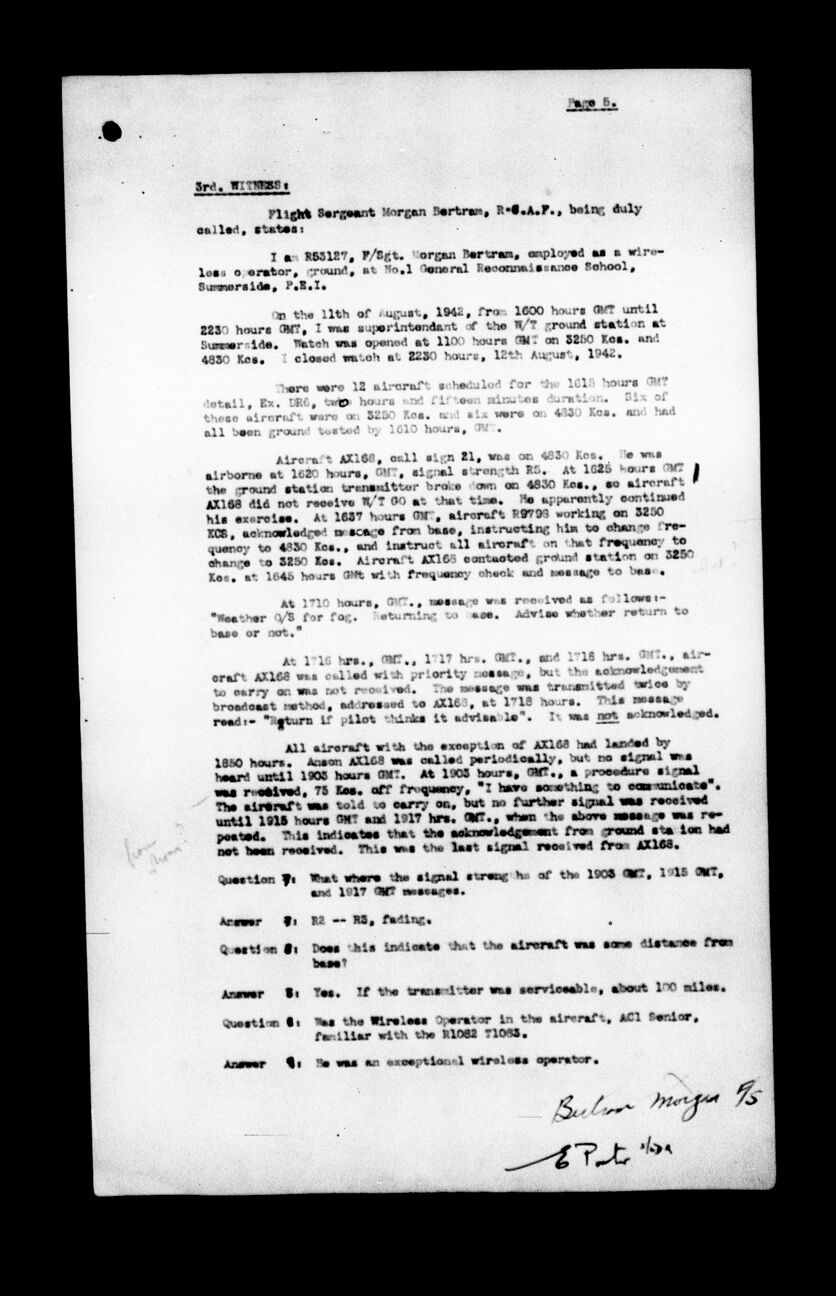
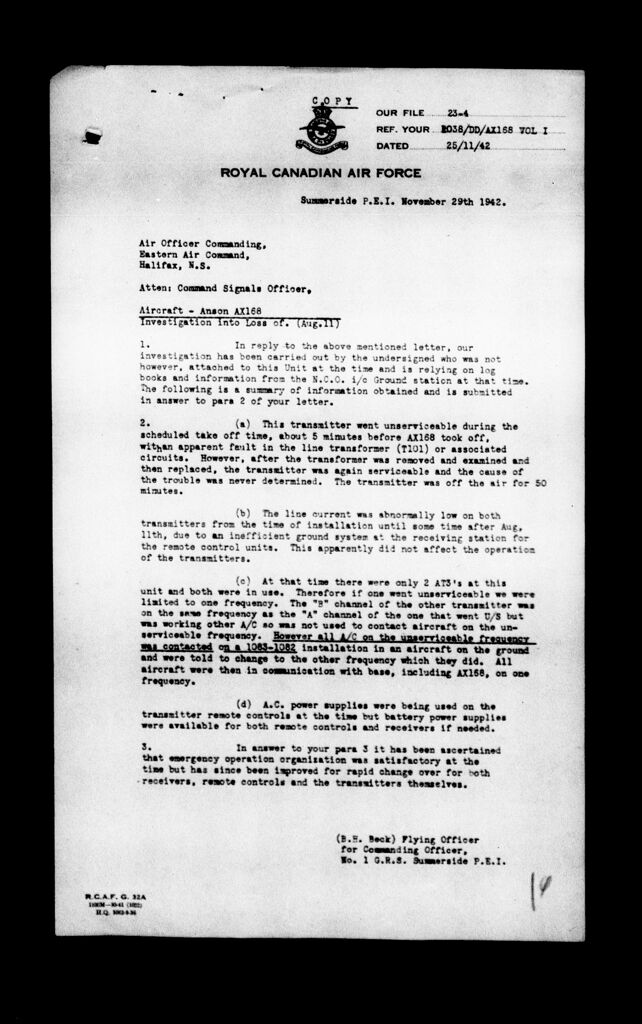
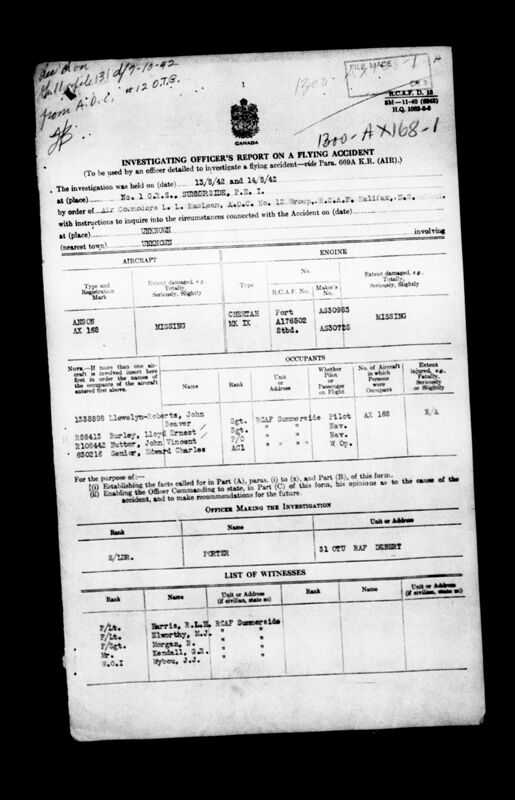
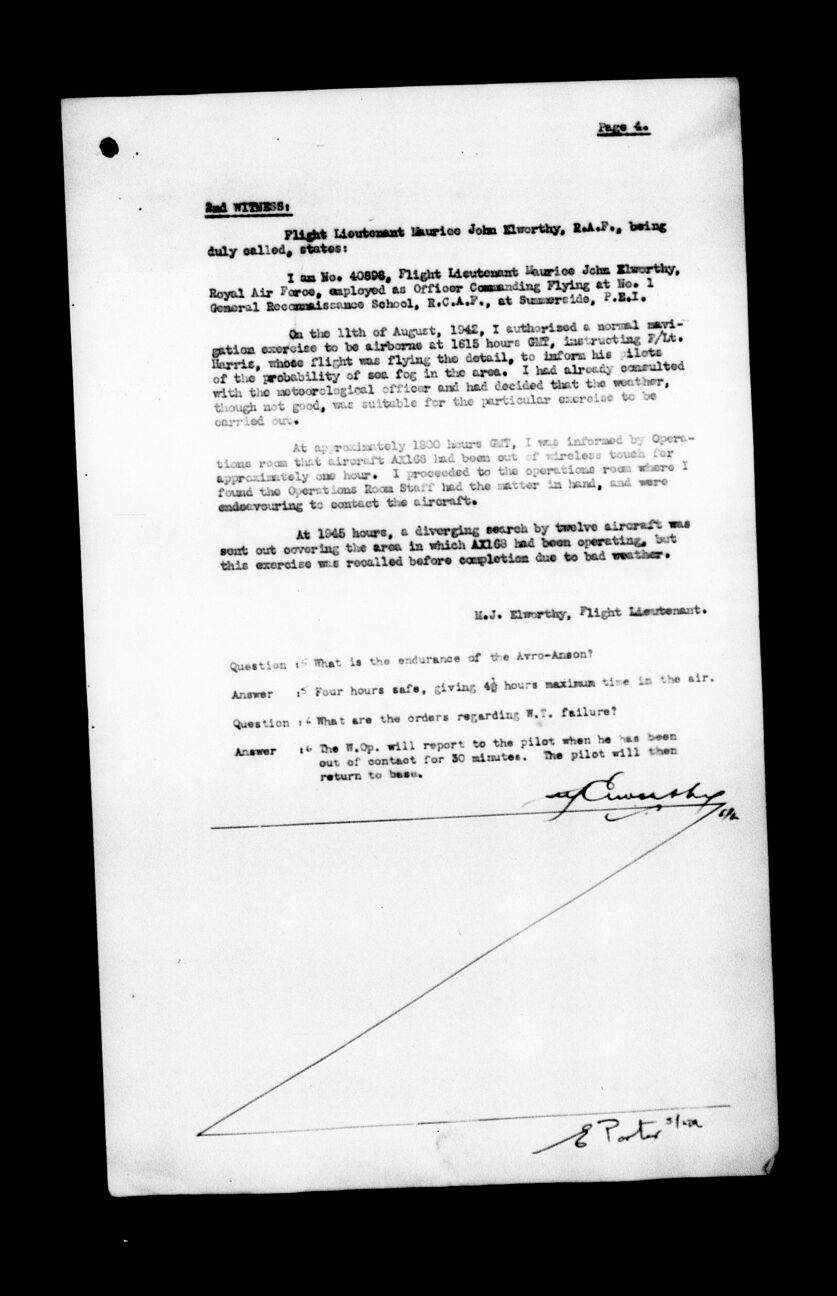
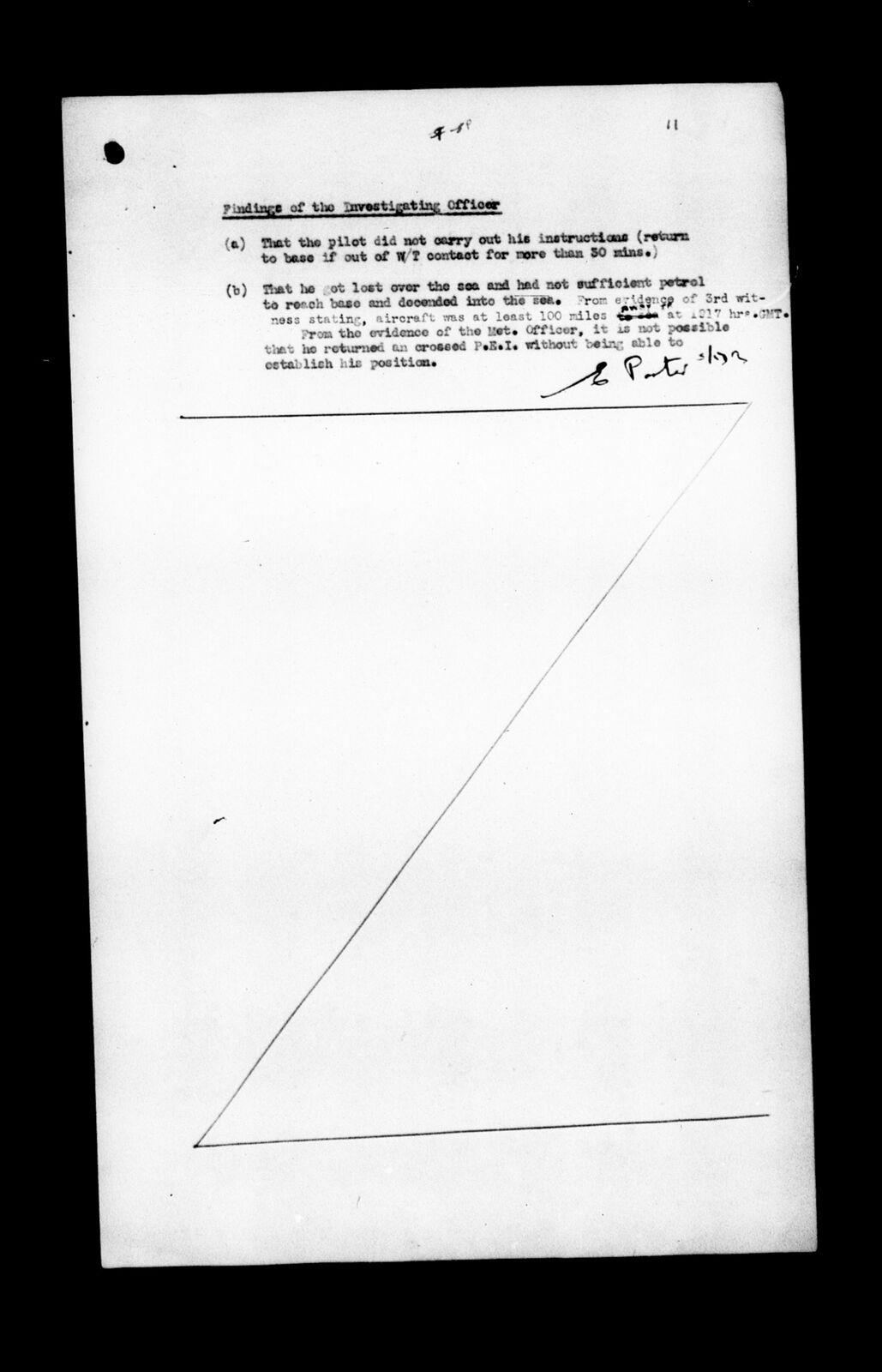
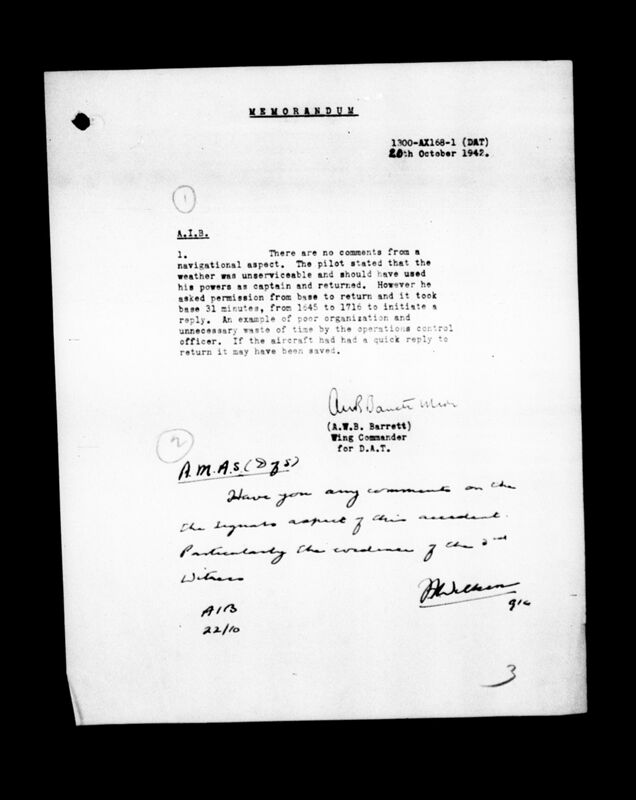
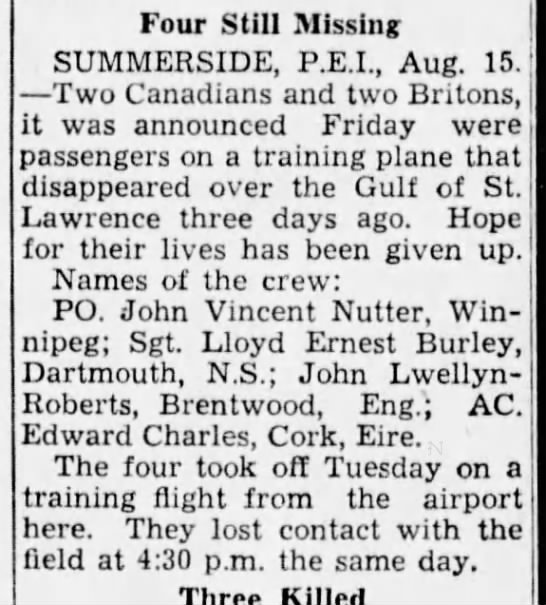
July 7, 1917 - August 11, 1942











Lloyd Ernest Burley, born in Saint John, New Brunswick, was the son of Roy Rudman Burley, accountant, and Muriel Lillian (nee MacAlary) Burley of Dartmouth, Nova Scotia. He had one brother, Roy Rudman Burley, Jr. The family was Anglican.
Lloyd, with a Grade XII education, worked at Maritime Telegraph and Telephone Ltd. as a repairman prior to enlisting with the RCAF in May 1941. (He enrolled in the NPAM November 1940.) After the war, he hoped to remain in the aviation industry, flying. He liked tennis, swimming and skating, enjoying fishing and sailing. He did not smoke, nor drink alcohol. He stood 5’10” tall and weighed 145 pounds, with blue eyes and dark brown hair. “Athletic physique and alert mentality.” An acid scar on his right wrist was noted. “A very good candidate, but has little nervous habits such as screwing up his face, whistling, etc. Seems very alert and very fit. Wants pilot.” Other comments: “Physically, this man in ok. I find it difficult however to evaluate his general make up and general attitude. But he appears keen to fly. His coordination tests are above average.”
Lloyd’s journey through the BCATP began at the Halifax Recruiting Centre on May 8, 1941, then he was sent to Toronto and No. 1 Manning Depot July 10, 1941. From there, he was sent to No. 14 SFTS, Aylmer, August 9, 1941.
From there, he was sent to No. 1 ITS, Belleville, Ontario, September 2, 1941 until October 26, 1941. “”85%. Energetic. Keen, leadership qualities. Commission material.” Lloyd was 43 out of 144 in his class.
He was then at No. 3 EFTS, London, Ontario October 27 until December 20, 1941. “A little rough on controls. Requires additional instruction on aerobatic. Absorbs training quite easily. Average student in instruments. GROUND TRAINING: 10th out of 29 in class. This pupil pilot is moderately persistent. Responsible and conscientious. Ready to take the initiative. Fairly alert and good average learner. Good at sports.”
Lloyd was in the hospital January 5-8, 1942, January 14-24, 1942, then sent to Christie Street Hospital, Toronto, January 31 to February 2, 1942.
He returned to No. 14 SFTS, Aylmer until July 24, 1942. Here he earned a “First Aid to the Injured” certificate. “Navigation Link: above average. An average pupil. Would make a better showing on tests if he didn’t try to hard. No outstanding faults. GROUND TRAINING: A higher than average student who was consistently toward the top of the class throughout his course.” Other comments: “A hard working, average student. Likes flying and learns well.” He trained with John Vincent Nutter.
From there, for further training, both John Nutter and Lloyd Burley were sent to No. 1 GRS, Summerside, PEI, July 15, 1942.
Less than two months later, they were missing over the Gulf of St. Lawrence with two others aboard Anson AX168: Sgt. John Beaver Llewelyn-Roberts, 1338898, RAF, and LAC Edward Charles Robert Senior, 630216, RAF. “At Summerside, visibility 15 miles, scattered clouds at 1500 feet; unlimited overcast. Overcast with patches of sea fog over Gulf [of St. Lawrence]. Aircraft failed to return from routine navigation exercise over Gulf of St. Lawrence.”
Llewelyn-Roberts was noted as the pilot with Burley was first navigator and Nutter as second navigator. Senior was the wireless operator.
S/L Porter from No. 31 O.T.U. was the officer in charge of the investigation. Five witnesses were called on August 13-14, 1942, resuming on August 26, 1942.
The first witness, F/L R. L. H. Harris, 70901, Flight Commander of A Flight, No 1 GRS, Summerside, PEI: “On the 11th of August 1942, Sgt. Llewelyn-Roberts, a staff pilot and crew under instruction, were detailed on the programme to carry out a routine navigation training flight in Anson AX168, taking off at 1615 hours and returning to Summerside at approximately 1930 hours. He took off at 1615 hours. At 1800 hours, I was informed that no sign had been received from this aircraft for one hour. The aircraft failed to return and the G/C flying took overdue action.” He said that the airplane had been flown the previous day without issue and all flying instruments were serviceable, as the pilot had flown Anson AX168 “since he came here on the 17th of July 1942. His ability as pilot was average and has on previous occasions, avoided flying in bad weather.”
The second witness, F/L Maurice John Elworthy, 40898, RAF: “On the 11th of August 1942, I authorized a normal navigation exercise to be airborne at 1615 hours, instructing F/L Harris, whose flight was flying the detail, to inform his pilots of the probability of some fog in the area. I had already consulted with the meteorological officer and had decided that the weather, though not good, was suitable for the particular exercise to be carried out. At approximately 1800 hours, I was informed by Operations room that aircraft AX168 had been out of wireless touch for approximately one hour. I proceeded to the operational room where I found the Operations Room Staff had the matter at hand and were endeavouring to contact the aircraft. At 1945, a diverging search by twelve aircraft was sent out covering the area in which AX168 had been operating, but this exercise was recalled before completion due to bad weather.” He indicated that the endurance of the Avro-Anson was four hours safe, giving 4.5 hours maximum time in the air. If the W. T. failed, the wireless operator was to report to the pilot when he was out of contact for 30 minutes. The pilot was then to return to base.
The third witness, F/S Morgan Bertram, R53127, wireless operator, ground, No. 1 G. R. S.: “There were twelve aircraft scheduled for the 1615 hours detail, for two hours and 15 minutes’ duration…Aircraft AX168, call sign 21, was on 4830 Kcs. He was airborne at 1620 hours, signal strength R5. At 1625 hours, the ground station transmitter broke down…so aircraft AX168 did not receive W/T GO at that time. He apparently continued his exercise. At 1637, aircraft R9798…acknowledged message from base, instructing him to change frequency and instruct all aircraft on that frequency to change….aircraft AX168 contacted ground station at 1645 hours with frequency check and message to base. At 1710, message was received: ‘Weather O/S for fog. Returning to base. Advise whether return to base or not.” At 1716, 1717, 1718, aircraft AX168 was called with priority message, but the acknowledgement to carry on was not received. The message was transmitted twice by broadcast method, addressed to AX168 at 1718 hours. This message read: ‘Return if pilot thinks it advisable.’ It was NOT acknowledged. All aircraft with the exception of AX168 had landed by 1850 hours. Anson AX168 was called periodically, but no signal was heard until 1903 hours. At 1903 hours, a procedure signal was received…’I have something to communicate.’ The aircraft was told to carry on but no further signal was received until 1916 hours and 1917 hours when the above message was repeated. This indicates that the acknowledgement from ground station had not been received. This is the last signal received from AX168.” He said that the message received indicated that the aircraft was some distance from base, about 100 miles. “Wireless Operator Senior was an exceptional wireless operator. It is possible that he sent had gone unserviceable in the air and that he had been working on it.”
The fourth witness, Mr. George Roland Kendall, meteorologist; “Fog patches onto the water, visibility under half a mile, intermittent rain and drizzle.”
FINDINGS: That the pilot did not carry out his instructions (return to ase if out of W/T contact for more than 30 minutes). That he got lost over the sea and had not sufficient petrol to read base and descended into the sea. From the evidence of the 3rd witness, the aircraft was at least 100 miles away at 1917 hours. From the evidence of the met. officer, it is not possible that he returned and crossed PEI without being able to establish his position. Anson AX168 had broken W/T for one hours 53 minutes.
The pilot had approximately 100 hours as staff pilot at No. 1 GRS. W/C A. W. B. Barrett wrote in a memo dated October 20, 1942: “There are no comments from a navigational aspect. The pilot stated that the weather was unserviceable and should have used his powers as captain and returned. However, he asked permission from base to return and it took base 31 minutes from 1645 to 1716 to initiate a reply. An example of poor organization and unnecessary waste of time by the operations control officer. If the aircraft had a quick reply to return, it may have been saved.”
In late October 1955, Mr. Burley received a letter informing him that since Lloyd had no known grave, his son’s name would appear on the Ottawa Memorial.